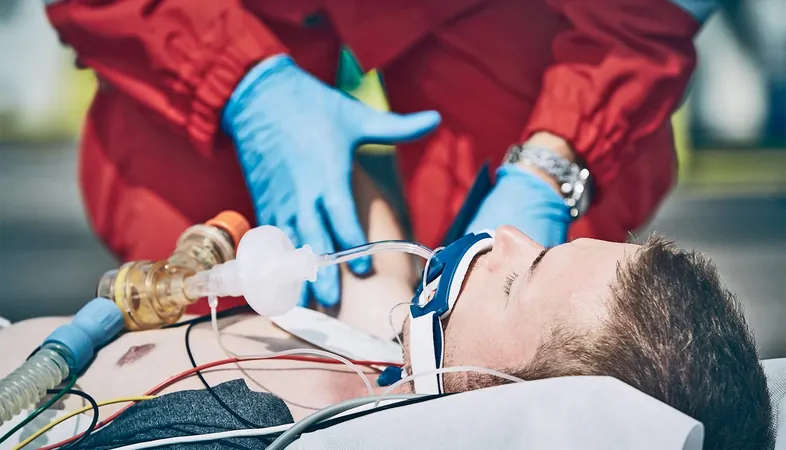
Revolutionary Soft Robot Intubation Tool Set to Save Lives in Emergencies
2025-09-15
Author: Daniel
A Game-Changer in Emergency Medicine
Imagine a tool that could significantly enhance survival rates in medical emergencies. A groundbreaking soft robot intubation device designed for users without extensive training is on the brink of changing the landscape of emergency care.
The Urgency of Airway Access
In critical situations, securing an open airway is paramount. If oxygen flow is compromised, every other life-saving intervention becomes futile. However, the traditional route to establishing an airway through endotracheal intubation is notoriously challenging, even for highly trained professionals.
Breaking the Barriers of Traditional Intubation
In unpredictable field conditions or bustling ERs, emergency personnel often grapple with time constraints, inadequate lighting, and trauma. What if a new tool could alleviate this reliance on perfect conditions and extensive experience?
Introducing the Soft Robotic Intubation System (SRIS)
Researchers at the University of California, Santa Barbara, led by David Haggerty and Elliot Hawkes, have developed a revolutionary nonelectronic soft robotic device that autonomously guides a soft tube into the trachea. Initial testing results are impressive, boasting a 100% success rate among trained users and a 96% success rate with EMTs and paramedics.
Transforming Intubation Techniques
Current techniques depend heavily on visualizing the trachea and maneuvering a tube through intricate anatomical pathways. The challenges multiply in emergency settings where conditions are far from ideal. Haggerty explains that traditional tools typically require pushing through the airway, making them cumbersome and limited.
The Innovative Mechanics of the SRIS
The soft robotic intubation system redefines conventional approaches by utilizing a soft, inflatable tube that expands as it navigates through the anatomy. With a curved introducer guiding the way and carrying a pre-inflated tube, this device represents a breakthrough in how intubation can be performed.
Minimizing Risk and Maximizing Efficiency
This innovative approach minimizes the risk of injury to delicate tissues, ensuring a smoother interaction within the airway. The device adapts to variations in individual anatomies, vastly reducing the need for extensive training. Tests with dummies revealed a staggering 100% success rate for experts and an 87% rate for novices who underwent only five minutes of training.
Looking Ahead: Clinical Trials and Future Applications
The next phase for this pioneering technology involves clinical trials aimed at securing FDA approval. Researchers are optimistic about its efficacy but recognize the necessity for rigorous testing in real-world situations. If validated, this device could transform emergency intubations in the U.S. and beyond, particularly in regions lacking essential health services.
Collaborative Efforts and Funding
This transformative project is supported by collaborators from various institutions, including Vine Medical, Inc., and the University of Texas Health. Funding has also been provided by the National Science Foundation, highlighting the importance of innovation in emergency medical care.



 Brasil (PT)
Brasil (PT)
 Canada (EN)
Canada (EN)
 Chile (ES)
Chile (ES)
 Česko (CS)
Česko (CS)
 대한민국 (KO)
대한민국 (KO)
 España (ES)
España (ES)
 France (FR)
France (FR)
 Hong Kong (EN)
Hong Kong (EN)
 Italia (IT)
Italia (IT)
 日本 (JA)
日本 (JA)
 Magyarország (HU)
Magyarország (HU)
 Norge (NO)
Norge (NO)
 Polska (PL)
Polska (PL)
 Schweiz (DE)
Schweiz (DE)
 Singapore (EN)
Singapore (EN)
 Sverige (SV)
Sverige (SV)
 Suomi (FI)
Suomi (FI)
 Türkiye (TR)
Türkiye (TR)
 الإمارات العربية المتحدة (AR)
الإمارات العربية المتحدة (AR)